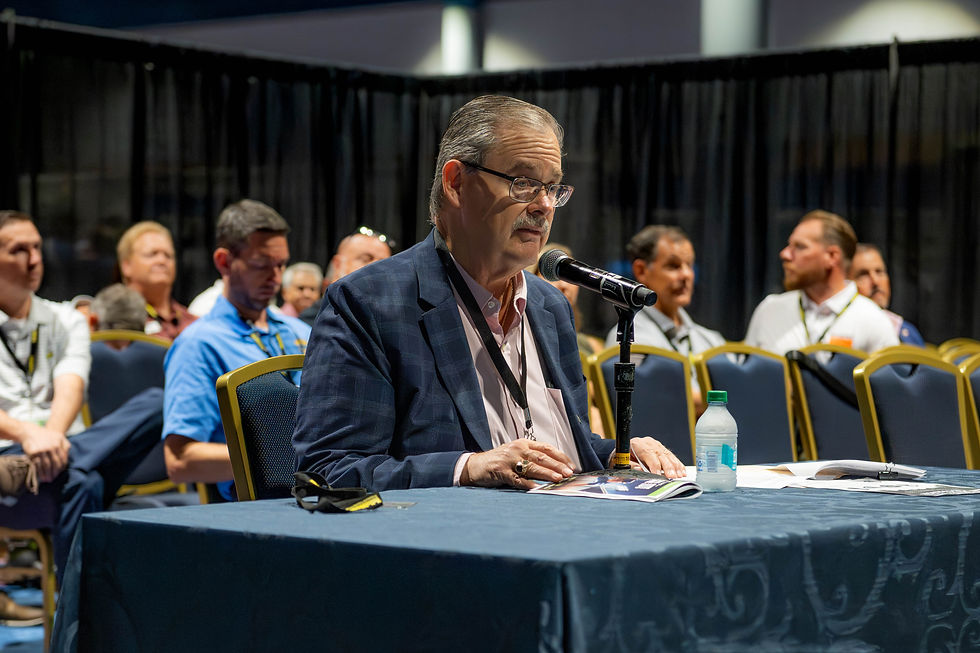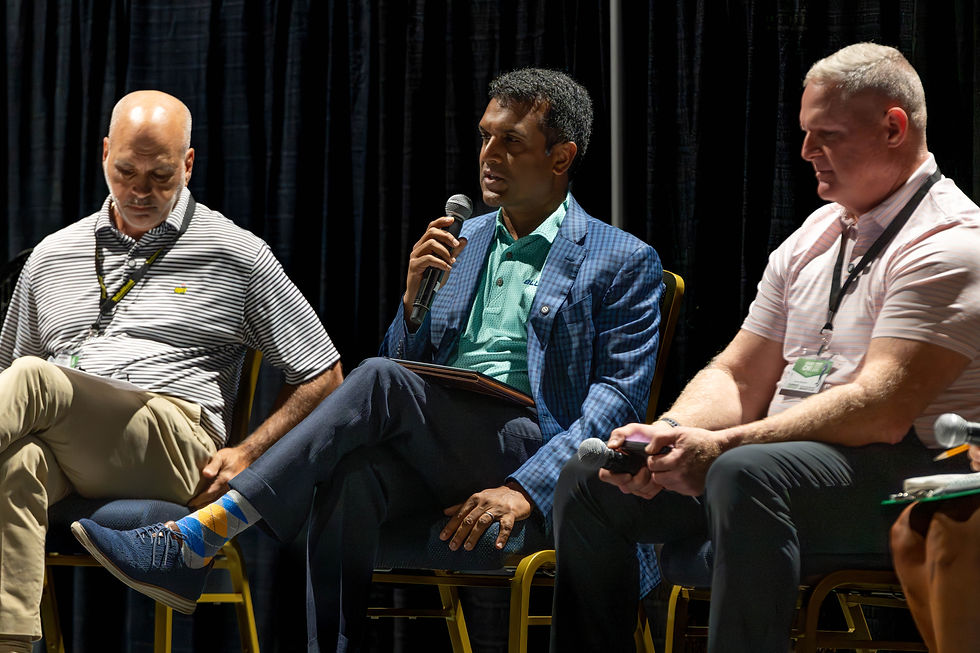Standing Room Only: FBMA Panel Tackles Tariffs, Labor, and the Future of Building
- RoMac Media

- Sep 2
- 4 min read
When Don Magruder took the stage to moderate the Florida Building Material Association’s (FBMA) highly anticipated panel, the room was already filled to capacity. Attendees spilled into the aisles, eager to hear from some of the most respected voices in the industry. What followed was a candid, thought-provoking discussion on the challenges and opportunities facing builders, suppliers, and distributors in today’s uncertain market.
The panel featured: Jim Kerkvliet, Co-Owner, Parliament Building Products; Shyam Reddy, President & CEO, BlueLinx Corporation; Danny Bachman, Co-Chief Operating Officer, Dixie Plywood; Deanna Jenkins, President, Thomas Lumber Company.

Together, they unpacked pressing issues from tariffs to labor shortages and offered grounded forecasts for the housing market heading into 2026.
Forecasting the Road Ahead
Moderator Don Magruder set the tone with a crucial question: What’s your business forecast for the rest of 2025?

Jim Kerkvliet, drawing on decades of steel industry experience, was cautiously optimistic:
“So far this year, we’re up single digits over last year. I think we’re going to be positioned well for growth because of the relationships we have with domestic steel producers. That gives us surety of supply and competitively priced products for our customers.”

BlueLinx CEO Shyam Reddy described the market as a “tale of two cities,” with varying conditions depending on geography and builder types:
“Some markets are heavily dependent on big track builders, while others are tied to custom builds with unique challenges. Despite the softness, there’s still a tremendous opportunity. And let’s be clear, I don’t think AI is going to take over building a house anytime soon.”
Danny Bachman of Dixie Plywood noted seasonality and “choppiness” in the industry but reminded the audience of the resilience of two-step distribution.
Meanwhile, Deanna Jenkins emphasized perspective gained from decades in the Orlando building market: “This industry runs in cycles. I’ve seen it before. I use this time as preparation to get ready for the next rush. It always comes back.”

The Biggest Threats on the Horizon
When asked about the greatest threats to their businesses, the panelists quickly pointed to economic uncertainty and a decline in consumer confidence.
Shyam Reddy identified disintermediation as a looming challenge:
“With consolidation and scale, some customers are going direct. It forces us to sharpen our pencils and clearly articulate our value.”

Danny Bachman recalled the scars of 2007–2009:
“That recession was so deep we had to cut our staff by a third. The fear or reality of recession is always a big threat.”

Deanna Jenkins pointed to tariffs and global instability:
“I’ve been in this industry for 38 years, and I’ve never dealt with tariffs like this. It’s still unknown territory for us.”
Jim Kerkvliet underscored the cost to serve in volatile markets:
“One day it’s really good, the next day it’s really bad. That choppiness creates real challenges in supply and labor.”
Tariffs, Labor, and Immigration: Real Impacts, Real Debate
Few topics drew more energy than tariffs and their ripple effects. From cedar lumber seeing anti-dumping duties spike from 14% to 34%, to steel imports squeezed by trade policy, every panelist acknowledged the impact, even if their companies leaned on domestic sourcing.
The conversation naturally shifted to labor and immigration, striking a chord with the packed audience. Deanna Jenkins spoke plainly:

“If they really did remove undocumented workers from our industry, we’d have a more significant slowdown than we have now. That’s why we need to go back to teaching young kids the trades.”
Jim Kerkvliet reinforced the point with data: nearly 40% of construction workers nationwide are not U.S. citizens, with even higher percentages in drywall and roofing. Both he and Shyam Reddy argued that the pressure would force more innovation, training, and workforce development to fill the gap.
The Housing Market: A Choppy but Resilient Future
Asked whether housing would rebound or stagnate, the panel agreed that 2025 and early 2026 will be bumpy, but resilience remains the industry’s hallmark.
Shyam Reddy: “We need 1.5 million new homes a year for the next decade. Strategy and resource allocation will determine who thrives.”

Danny Bachman: “It’s going to be choppy, but I’m optimistic about the second half of next year.”
Deanna Jenkins: “Central Florida is always in demand. People want to be here, and that keeps us resilient.”
Jim Kerkvliet: “Consumer confidence drives housing. With interest rate movement, I think the residential market will be better a year from now.”

Words of Advice for 2025
As the session closed, Magruder asked the panelists for their one piece of advice to help the audience weather the year ahead.
Danny Bachman: “Stick to your plan and believe in yourself.”

Deanna Jenkins: “Treat your vendors and customers like your partners. We’re in this together.”

Jim Kerkvliet: “Listen intently to your customers and suppliers, be ready for change, and focus on what you can control.”
Shyam Reddy: “Lean into the pace of change. Use it as an opportunity to innovate and serve better.”
A Standing Ovation for Industry Leadership
As applause filled the room, one truth was undeniable: this was more than just a panel. It was a gathering of leaders who embody resilience, candor, and collaboration.

From tariffs to labor shortages, uncertainty is a given. But as each panelist reminded us, so is the grit and ingenuity of America’s building industry.
“I will never bet against America.” – Shyam Reddy
And neither should we.

























































Le web n’est pas seulement une vitrine, c’est devenu le premier point de contact entre une marque et ses clients. Il faut donc une cohérence dans la manière de communiquer et une stratégie claire pour transformer un simple visiteur en client fidèle. Dans ce contexte, l’expertise d’un partenaire devient indispensable, car chaque détail compte : temps de chargement, responsive design, référencement naturel, contenu pertinent. Rhillane Marketing Digital, agence web professionnelle incarne justement cette approche pragmatique et complète. Cela montre à quel point une entreprise accompagnée peut se démarquer de celles qui se contentent du minimum.